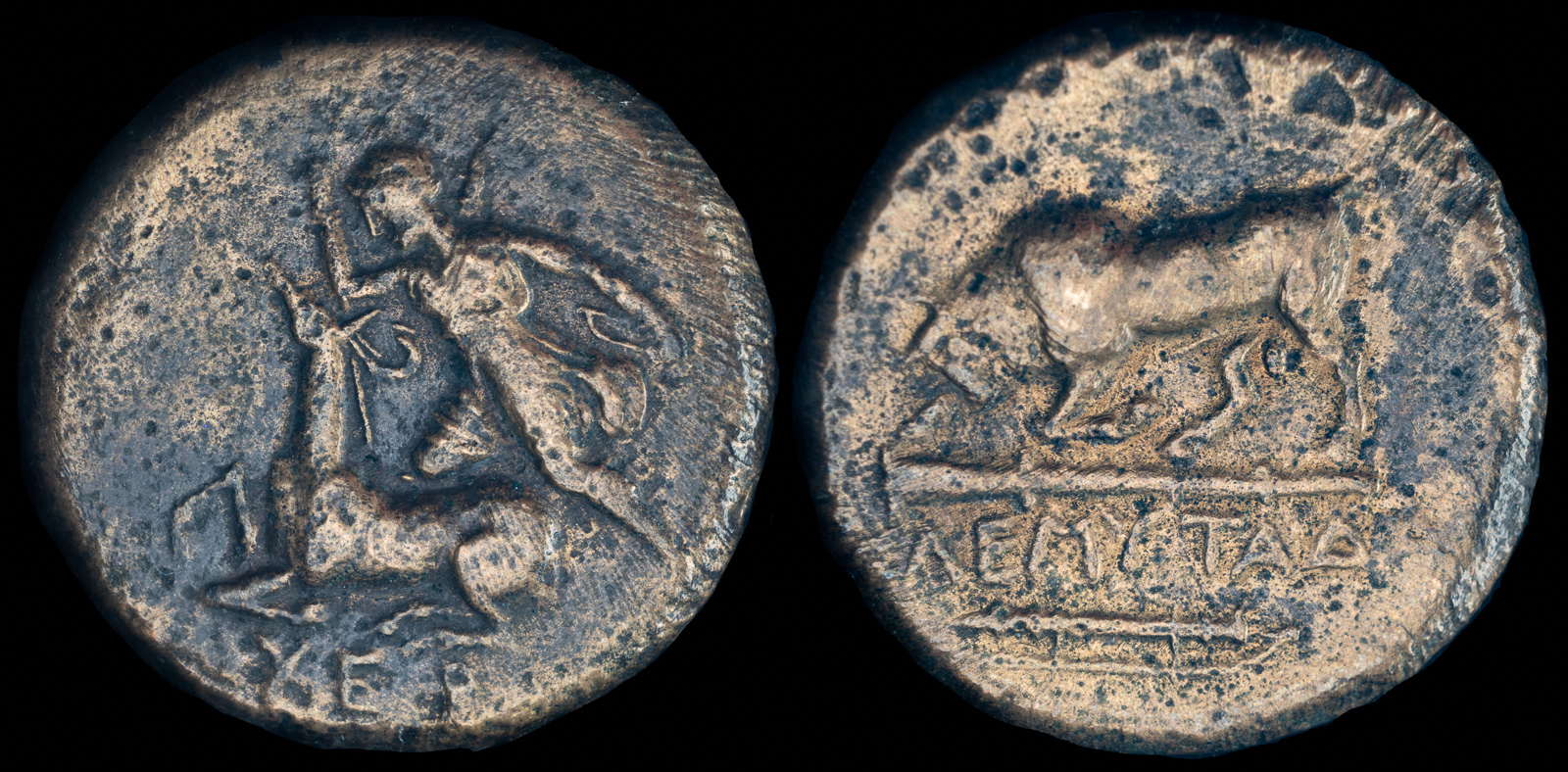
Bosporos, Tauric Chersonesus
ca 300-290 BCE
Artemis Parthenos running left, holding bow in left hand and spearing fallen stag.
Rev: ΚΛΕΜΥΤΑΔΑ. Bull butting left over club.
21mm, 6.86g
SNG Stancomb 481
ex-Rudolf Hoesch (1904-1990) collection
bought from M&M AG Basel in 1955
Recently, while reading through David R. Sear’s compendium of Greek cities, I noticed a beautiful coin from Chersonesos.
It was at this point that I realized Chersonesos was a separate city in the Tauric Chersonesos, as opposed to the Thracian Chersonesos that I already have. I’d in fact already noticed these coins, but had passed them by because I thought I already had an example from the city. 😞 For what it’s worth, “Chersonesos” means “peninsula” in Greek, and there are other cities with the same name who also minted coins. My belief is it was one of those names chosen when no one could agree on a better one.
The ancient city of Chersonesos is roughly modern Sevastapol, though it wasn’t built over by the modern city and the (rough) ruins are still visitable. There has been some effort to create a protected area around the ruins, but the presence of the Russian Black Sea fleet has discouraged it. Today, the remains are considered threatened by the modern city and a high number of tourists.
It was founded in roughly 500 BCE by settlers from Herakleia Pontika and remained mostly independent as the Bosporan Kingdom grew out of Pantikapaion, until it finally capitulated in 110 BCE.
The coin was previously owned by Rudolf Hoesch (1904-1990), whose collection was recently sold by Busso Peus, though this coin doesn’t appear to have been in that sale. His specialty was “Animals & Hunting”, and clearly this issue must have intrigued him.
Chersonesos was mentioned by ancient writes, though with very little detail. By the time Strabo mentioned it, the ancient Chersonesos was in ruins.
In terms of the typography, there’s an interesting paper by Ruja Popova, which I found a bit difficult to follow, but roughly correlates an ancient Skythian “Great Goddess”/Parthenos with Iphigenia and then Artemis. She briefly discusses Chersonesos’ coinage with:
“On other coins minted in the same centre she can be seen also as Ταυροπολος with a pro- tome of a bull on the reverse. Some bronze coins from the Chersonesus feature on the averse a bull about to kneel on his forelegs, head bent down, a wreath around his neck, ready to be sacriiced; on the reverse – a goddess spearing a deer.”
My example doesn’t have a wreath, but butting bulls were common on ancient coins (I have many other examples) and typically represent the moon, fertility, or rebirth among other things.